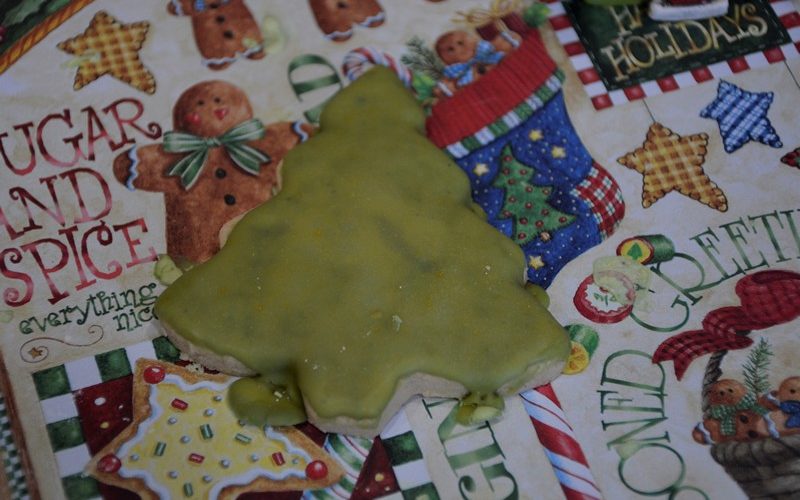AMANDA BANCROFT
Making Ripples
Sometimes we seek a return to the simpler ways of the past using the values of the present, in hope for a healthier future. But sometimes, we just want beautiful cookies! Those goals aren’t always in harmony with each other, leading to my humorous adventures in natural food coloring.
My first dive into the unknown happened at Easter time. We wanted to decorate the eggs using our own homemade dye pots. I recall various concoctions simmering on the stove as though the kitchen were some kind of chemistry lab. The eggs didn’t really turn out that great, except the turmeric-yellow ones, which glittered and had quite a texture when they dried. Most of the few colors we tried to make left residue and debris on the eggshells; we should have thoroughly strained the liquid first before adding the eggs. Even though we had the ugliest eggs that Easter, it was hilarious to watch the outcome! Results seem to vary from person to person — and from color to color, depending on what ingredients are used.
A few years later, I tried Color Kitchen, a brand of natural food coloring that can be purchased in boxes at Ozark Natural Foods. Color Kitchen lists each color ingredient along with maltodextrin on the back of the box. Maltodextrin is added to each color in order to give the product a better mouthfeel and to thicken it for frosting. It’s derived from vegetable starch and is added to many snack foods and peanut butter. Turmeric is used to make yellow, spirulina extract for blue, both turmeric and spirulina extract for green, beet powder for pink, and turmeric and annatto extract for orange. Annatto is the name for the seed that comes from the achiote tree, which is native to central and south America. Turmeric is a spice that originates in southeast Asia from a plant in the ginger family. Spirulina comes from blue-green algae, also called cyanobacteria.
On Valentine’s Day, I made pink frosting for cupcakes. Again, the pink coloring comes from beet powder combined with maltodextrin in a single use package. Wow! What a difference from the homemade recipes. This pink was instantly eye-popping, Pepto Bismol pink. The plate of cupcakes illuminated dark corners of the countertop. We were surprised by the vibrancy; these cupcakes had pizzazz.
The most recent adventure was this month, when I baked Christmas tree sugar cookie cutouts. For the frosting, I decided to try and make green by combining the single use blue with the yellow, basically replicating Color Kitchen’s green recipe on their box. (You could instead just buy the box of green, or a rainbow box that contains all the colors.) Unfortunately, no matter how many dashes of blue and sprinkles of yellow were added, the shade of green or nearly green wasn’t pretty. At first it was ghastly – the cookies looked like pea soup, or puke, or yellowish green with blue specks. After more effort, we started seeing chartreuse, pine green, or olive. It wasn’t consistent — there were still splotches — but in the end we were satisfied with the unique results. Nobody would have Christmas cookies like these!
The downside of the DIY approach to creating dyes is that it takes more time, resources and experimentation. The downside of buying boxes of natural food coloring is that this creates waste from single-use packaging. Either way, it’s probably better than consuming artificial dyes or buying plastic dropper bottles of food coloring that are thrown away when empty. The upside of the natural approach is that you might really enjoy the color results, or have a fun family adventure!
Amanda Bancroft is a writer, artist, and naturalist living in an off-grid tiny house on Kessler Mountain. She and her husband Ryan blog about their adventures and offer tips to those wanting to make a difference at www.RipplesBlog.org.










